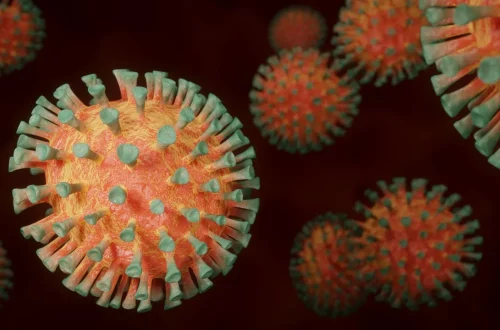
Effective Laser Hair Removal for Blonde Hair: What You Need to Know
Laser hair removal has gained significant popularity in recent years, becoming a widely sought-after solution for individuals looking to achieve smooth, hair-free skin. This method utilizes focused light beams to target and destroy hair follicles, ultimately reducing hair growth. While it is often associated with darker hair, many individuals with blonde hair may wonder about its efficacy and safety. The effectiveness of laser hair removal largely depends on the contrast between the hair color and skin tone. For blonde-haired individuals, achieving optimal results can be more complex due to the lower levels of melanin in their hair.
Understanding the nuances of laser hair removal for blonde hair is crucial for anyone considering this procedure. Factors such as hair color, skin type, and the type of laser used can all influence the outcomes of treatment. Furthermore, advancements in technology have led to the development of specialized lasers that can effectively treat lighter hair colors. With the right information and guidance, blonde-haired individuals can navigate their options in laser hair removal, ensuring they make informed decisions regarding their beauty and self-care routines.
Understanding Hair Color and Laser Technology
The interplay between hair color and laser technology is a critical factor in the effectiveness of hair removal treatments. Traditional laser hair removal methods have primarily targeted dark hair due to the high levels of melanin present. This pigment absorbs the laser energy, allowing for efficient heat transfer to the hair follicle, which ultimately leads to its destruction. However, individuals with blonde or light-colored hair often face challenges in this regard, as their hair contains significantly less melanin.
Recent advancements in laser technology have introduced options specifically designed to target lighter hair. These newer lasers utilize different wavelengths and technologies, such as diode lasers and intense pulsed light (IPL), to enhance the effectiveness of treatments on blonde hair. Diode lasers, for example, can penetrate deeper into the skin while being adjustable to different hair and skin types. This adaptability allows for more precise targeting of the hair follicles, even in cases where the contrast between hair and skin color is minimal.
It’s also important to consider skin tone when discussing laser hair removal for blonde hair. Fair-skinned individuals may find increased success with certain laser types, as the contrast between their skin and hair can still be sufficient for the laser to distinguish and effectively treat the hair follicles. However, those with darker skin tones and blonde hair may need to be more cautious, as the risk of skin damage or discoloration can increase if not treated with the appropriate laser settings.
Consultation with a qualified technician who understands the nuances of different hair and skin types is essential for achieving the best results. During an initial consultation, individuals can discuss their concerns, expectations, and previous experiences with hair removal treatments. A personalized approach, taking into account both hair color and skin tone, can significantly impact the overall effectiveness of laser hair removal for blonde-haired individuals.
Choosing the Right Laser for Blonde Hair
Selecting the appropriate laser for hair removal is paramount, especially for individuals with blonde hair. Not all lasers are created equal, and the choice of laser can make a significant difference in the treatment’s success. Generally, there are three primary types of lasers used for hair removal: Alexandrite, Nd:YAG, and Diode lasers. Each of these lasers has its unique advantages and applications.
Alexandrite lasers are often considered one of the most effective options for lighter skin tones. Their longer wavelengths allow for quicker treatment sessions while still providing effective hair removal. However, their effectiveness on blonde hair can vary, as the lower melanin content may not absorb the laser energy as efficiently as darker colors.
On the other hand, diode lasers have gained popularity for their versatility. They can be adjusted to suit various skin types and hair colors, making them a suitable choice for individuals with blonde hair. The ability to customize the settings allows for targeted treatment that can minimize the risk of skin irritation while maximizing hair removal efficiency.
Nd:YAG lasers are typically better suited for individuals with darker skin tones, but they can also be effective for lighter hair under the right conditions. These lasers penetrate deeper into the skin, which may provide a solution for some blonde-haired individuals looking to achieve long-lasting results.
Consulting with a licensed practitioner who specializes in laser hair removal is crucial when determining the best laser for your specific hair type. They can assess your individual characteristics and recommend the most suitable treatment option tailored to your needs.
What to Expect During the Treatment Process
Understanding what to expect during the laser hair removal process can help alleviate anxiety and prepare individuals for their appointments. The treatment typically begins with a consultation, during which the technician assesses your hair and skin type and discusses your goals. They will also explain the procedure, potential side effects, and aftercare requirements.
On the day of the treatment, the area being treated will be cleansed, and a topical anesthetic may be applied to minimize discomfort. Protective eyewear will be provided to safeguard your eyes from the laser’s bright light. The technician will then use the laser device to target the hair follicles. The sensation during the procedure is often described as similar to a rubber band snapping against the skin, though individual experiences may vary.
The duration of each session can depend on the size of the area being treated. Smaller areas, such as the upper lip or underarms, may take only a few minutes, while larger areas like the legs or back may require a longer commitment. It’s important to note that multiple sessions are typically necessary to achieve the desired results, as hair grows in different cycles.
Post-treatment, some individuals may experience mild redness or swelling in the treated area, but these effects usually resolve quickly. Practitioners will provide specific aftercare instructions, which may include avoiding sun exposure and refraining from certain skincare products for a few days. Following these guidelines can enhance results and aid in the healing process.
Overall, the laser hair removal process for blonde hair can be highly effective when approached correctly, with the right technology and professional guidance.
Maintaining Results After Treatment
After completing a series of laser hair removal sessions, maintaining the results is essential for long-lasting smoothness. While many individuals experience significant hair reduction, it’s important to recognize that some hair may still grow back over time. This is particularly true for those with blonde hair, as the treatment may not eliminate all hair follicles.
Regular maintenance sessions can help manage any regrowth. Typically, practitioners recommend follow-up treatments every few months to ensure that any new hair growth is addressed promptly. These maintenance sessions can be shorter and less intensive than the initial treatments, making them more manageable for individuals with busy schedules.
In addition to scheduling maintenance sessions, adopting a proper skincare routine can further enhance the results of laser hair removal. Keeping the skin moisturized and protected from sun exposure is crucial. Sun damage can lead to pigmentation changes, making it more difficult for the laser to effectively target hair follicles in subsequent treatments.
Furthermore, individuals should avoid waxing or plucking hair between sessions, as these methods can disrupt the hair growth cycle and hinder the laser’s effectiveness. Shaving is typically recommended as the best method for managing hair in between treatments, as it does not remove the hair follicle and allows the laser to work efficiently during sessions.
In conclusion, while laser hair removal for blonde hair presents unique challenges, advancements in technology and personalized treatments can yield positive results. By understanding the process, choosing the right laser, and following post-treatment care, individuals can enjoy the benefits of smooth, hair-free skin.
**Disclaimer:** This article is for informational purposes only and does not constitute medical advice. For any health concerns, please consult a qualified healthcare professional.




